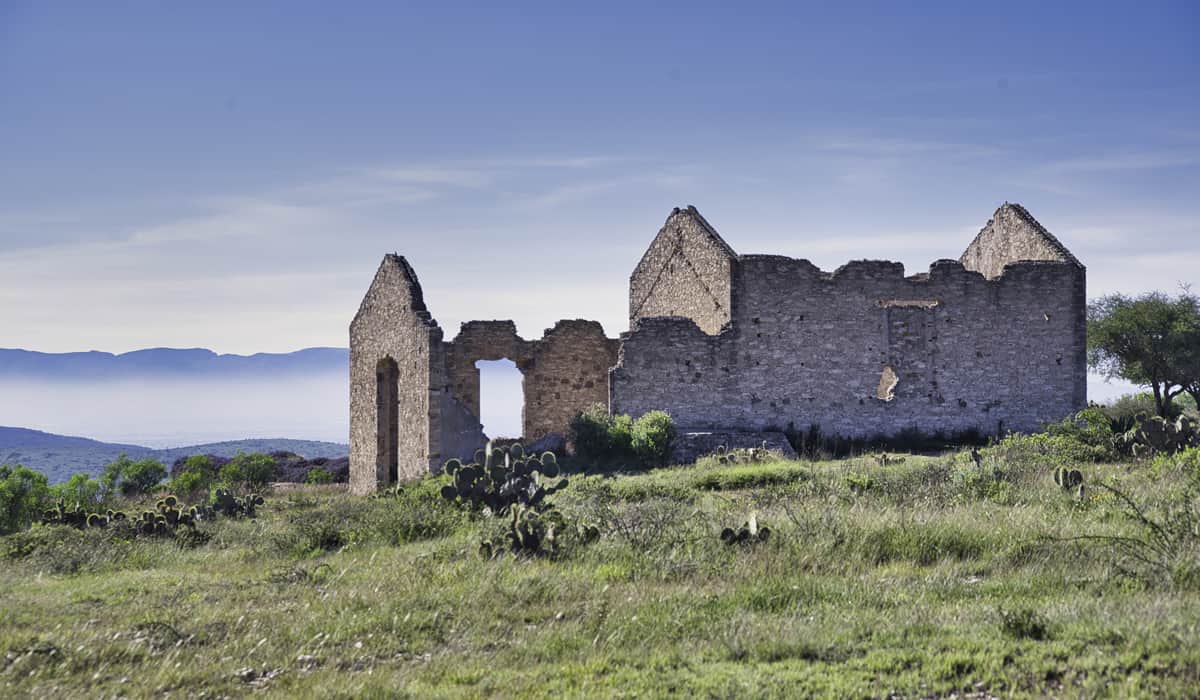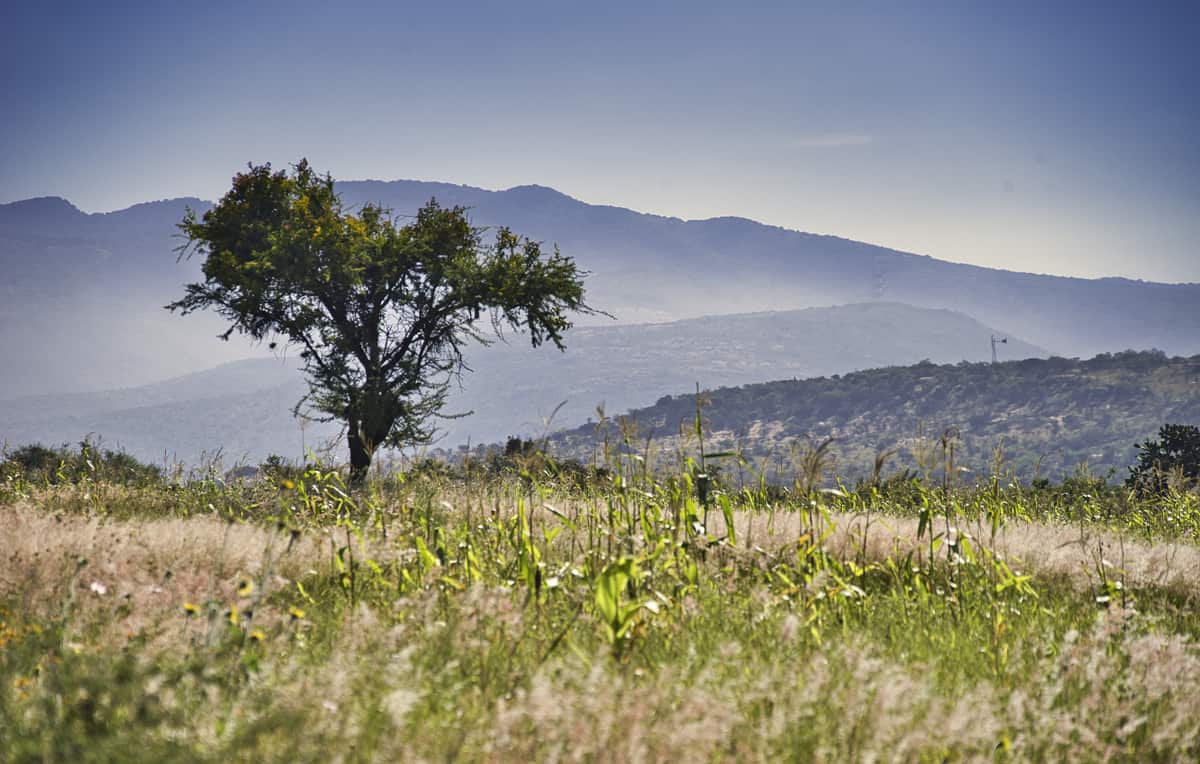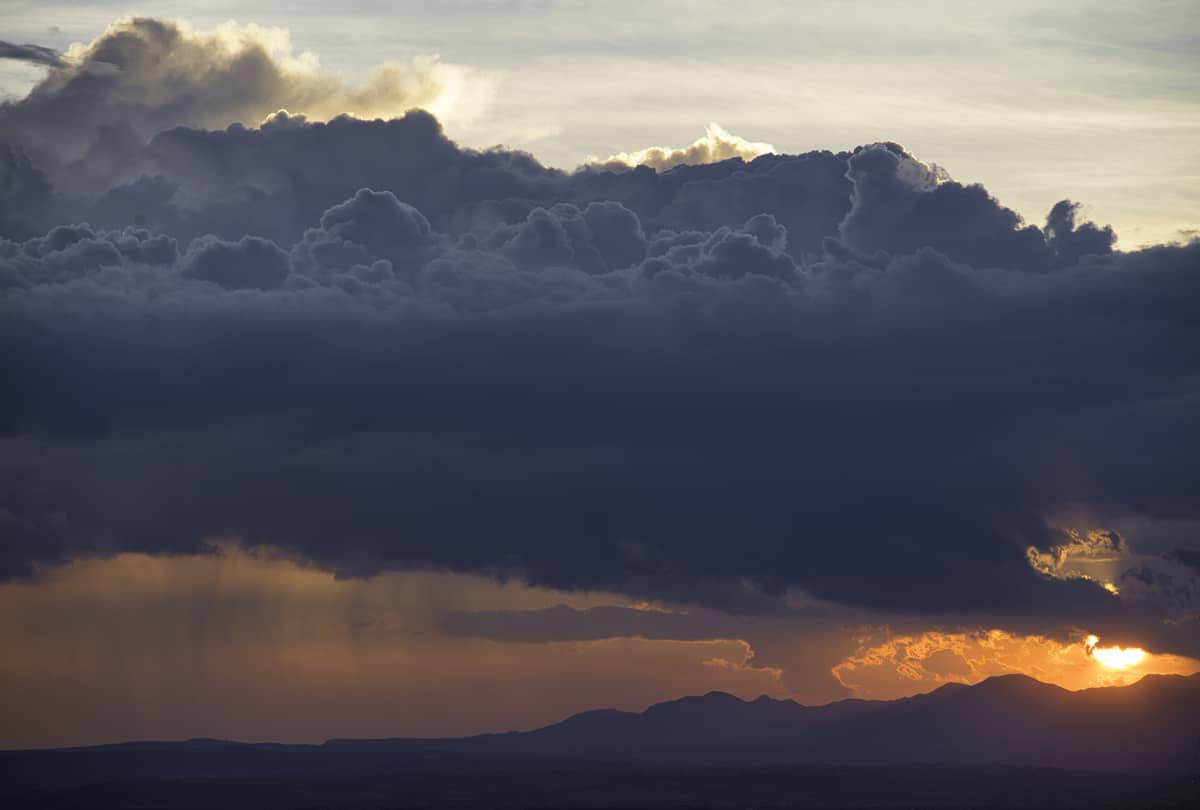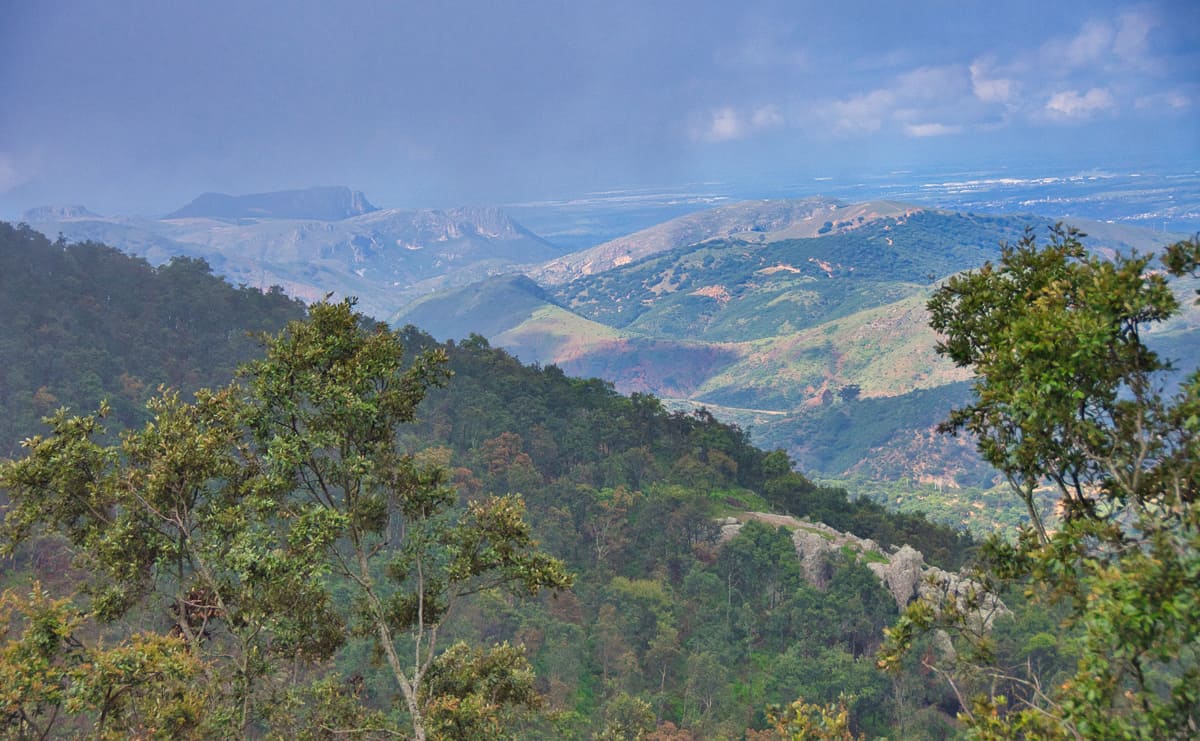
What’s it like living in Mexico?
Wonder what it’s like living in Mexico? Randy and his wife Mary moved to San Miguel de Allende in 2019 and fell in love with both the city and the country.
I’ve got an interview with Randy coming up on the blog. This is not that. This post covers their move and all that they observed and experienced when they first arrived in Mexico.
Randy isn’t shy in comparing Mexico to the U.S. For many expats it’s the logical reference point. But beyond comparisons, this post gives you a flavor of everything that makes Mexico (and San Miguel de Allende) special.
Note: Randy is a co-owner of one of San Miguel’s best Restaurants (Venencia Restaurant), has a moto and scooter rental business (San Miguel moto), and is also a hike leader and director of the San Miguel de Allende Hiking Group. He’s fully embraced Mexico and San Miguel de Allende.
Below are Randy’s words.
Preface:
I wrote this in the first 8 months of having moved to Mexico. We had never lived in any other country but the U.S. so I wanted to document our observations and experiences – not just for ourselves but for others who might be considering a similar move. We love Mexico and our love has only grown with time.
In many places in this article I compare living in Mexico to living in the U.S. Because I lived in the U.S. for my entire life until now, the comparison is natural and relevant. I frequently refer to the United States, sometimes in less than glowing terms. It doesn’t imply that I feel the U.S. is an inferior country. It’s only meant to communicate my feelings and observations, not an indictment or criticism of either country or its people. If I would have been born and lived in Mexico and moved to the U.S. at 63, this article might be an interesting mirror image.
The following is meant to be a lighthearted look at the experiences we’ve had on this life-changing move (Note: In some places I reference pricing. I wrote this in 2019 – please keep that in mind before you jump on me).
In late March 2019, Mary and I moved from San Francisco to San Miguel de Allende, in the state of Guanajuato, Mexico. I had sold my telephone company business and Mary had quit her job. This was a grand plan and I’ll be damned if it didn’t come together.
We had done some minor research on Mexico and San Miguel as a potential next destination in life. Mary had been here when she was 10 years old and I’d never visited the town. Despite that we came here last October with the intent on finding a new home. Yup, I committed to living in San Miguel before ever setting foot in the town…or even the state.
During last fall’s visit, we immersed ourselves in the culture, wore ourselves and shoes out investigating the plethora of colonias (neighborhoods) and walked through homes for sale until exhaustion (ours and the housing inventory). At the conclusion of our hectic visit we didn’t find the right place. Mary wanted a new ultra-modern cubist place with lots of concrete, glass and white walls, while I was at the other end of the spectrum, hugely attracted to traditional Mexican colonial style, old and dripping with character and renovation “opportunities”. So we resigned ourselves to a plan B, which was to move in early 2019, rent for a year and then tackle the challenge of buying a home that would make us both happy. That flew out the window when shortly after returning home, we found a new home posted on our Realtor’s site. At first, it seemed to not fit our needs… but as the days went on and the views of the photos more frequent and thorough, it developed into a love affair.
So, we flew here in January, made an offer and closed the deal shortly thereafter. We made the move in late March. It was quite a mad dash to downsize our physical assets, filtering through a collection of 29 years of consumerist crap and my motorcycle collection. We then arranged to have an international mover pack and ship the remaining items in a short period of time. In retrospect, it was a good approach even if not planned. Make quick decisions, act and move (pun intended) without delay. Moving to a foreign country is a shitload of stress, even for one as adventurous as me. Protracting that stress was a needless burden. Buck it up, make it happen. We did.
Here are some observations from our first eight months living in San Miguel de Allende (and Mexico!)
RESIDENCY: We are temporary residents. We renew that for four years and then get permanent residency. I feel no need to have dual citizenship. Mary will become a citizen based upon the headstart she has with her Mexican heritage.
WEATHER: At 6,300’ altitude, it is eternal spring where we call home now. The hottest is the low 90’s and that’s only occasionally and even then, at night it dips to the high 50’s. Our hot season is April and May. In June the rains come and the highs are in the mid 80’s. Our winter is December and January with average highs of 73 degrees and lows hovering around 43. It has been known to freeze here on rare occasion. The wind rarely blows over 10 mph, except for occasional thunderstorm gusts. OK, we did experience a couple of short dust-storms in May – after all, it is a semi-arid desert. Since we are closer to the equator, daylight lasts between 11.8 hours and 13.5 hours, dependent upon time of the year.
From December through May is arid…and dusty. Did I mention that before? Once the calendar flips to June, the skies open with predominant afternoon and evening downpours. The streets serve dual duty as storm sewers and you can be stranded while you await the rivers to recess. It’s quite the spectacle as water pours out of the stone spouts that empty the rain-flooded top floors of the flat-roofed houses.
Mid-June, the moribund desert flora suddenly awakes from the voluminous rainfall, with a riotous greening and blooming, turning the parched brown land into a lush verdant carpet. And out come the insects!
COST OF LIVING: Flawless, perfectly ripe avocados are fifty cents, a big stack of corn tortillas hot off of the press is 10 cents, complete breakfast including coffee, fresh fruit, and several fresh salsas is around $4 and we get serenaded while we eat. Beer is $1.50 even at a fancier restaurant. Our cats’ food is more expensive than human food here.
Our property tax this year is $350. Electricity costs are minimal as we have a photovoltaic system that turns the electric meter backward and there is no need for air conditioning. Gas costs are about $500 per year, as gas fireplace heating is required on some of the more chilly mornings. No furnace.
A cab ride from Centro to home is $2.50. The highest price we’ve paid for entertainment is $15 a ticket, with $10 being more common, and more common yet is free. A movie costs about $4 and includes a glass of wine and maybe a snack too.
…And we live in the second most expensive city in Mexico following Mexico City.
Note: as I mention I wrote this in 2019 – since 2019 inflation has gone up 23%. Keep that in mind wherever I’ve mentioned pricing.
INAPAM: As a temporary resident over 60 I have a senior discount card that saves me 50% on bus fare, 10-15% on air fare, discounts into museums, parks, prescriptions, hotels, restaurants and medical expenses.
FOOD: Mexico’s cuisine has had a meteoric rise in recognition in the last decade and now is commonly considered some of the world’s best. UNESCO has awarded Mexican food Cultural Heritage status – the only cuisine in the world that’s received that recognition. And San Miguel’s food is some of the very best in Mexico outside of Oaxaca. This is a culinary nirvana. Do you sense deep happiness here?
FOODS NATIVE TO MEXICO: Corn, beans, squash, vanilla, chilies, tomatoes, turkey, sweet potatoes, avocados, and chocolate all originate in Mexico and were spread through the world, primarily through Spanish trading of Mexican goods throughout the world.
WINE: After the Spanish conquered Mexico in 1521, they prohibited the local production of wine. They feared that it would be sent back to Spain creating competition with the homeland wine industry. Today, there is a huge growth in planting grapes and making wines, including here in the San Miguel area. The industry is barely out of diapers, but Mexican wines have begun taking international awards and getting widespread recognition. Little of it makes its way outside of the country as its limited production is mostly consumed in Mexico. Mary and I have been hard at work late into the evening hours doing primary research and we’ve found some damned nice bottles…and a few sweet clinkers.
TEQUILA & MEZCAL: Both are ubiquitous in Mexico. I’ve always been a fan of tequila but mezcal wasn’t on the play list, except for the occasional glass straight as a sipper. Mary and I are are now converts, as I enjoy the smokiest offerings and Mary prefers the more subtle tastes. Enjoying a mezcal before and after your meal are culturally apropos. Mezcal is by far more complex and rewarding than tequila. There is the ancient story of the 400 rabbit spirits – you don’t know which one will visit you during a hearty night of imbibing of Mezcal. The mezcaleros create art in a bottle.
Having said that, tequila is the perfect spirit for mixing cooling cocktails during the hot months (all two of them). So, to me, tequila is more of a summer cocktail, and straight, it’s required imbibing at any honest fiesta. Yes, there are high end tequilas – but go all the way and please your palate generously with the magic of a mezcal.
ENTERTAINMENT: San Miguel is much too small to attract stadium acts and that’s okay. There is virtually no end to the entertainment options here, although punk and alt rock bands are still too rare. There are lots of regional and Central American groups that are excellent. And many expats perform, some fantastic, some pedestrian and a luckily few, dog howlers. Most of the fun is free. There are events at Plaza Civica every week, no charge: Latin jazz, danzon, Ballet Folklorica (beats the shit outta regular European-based ballet), symphony, rock bands, etc. We love these performances as they draw the local families. We so adore the Mexican nightlife of music, dance and fun with plazas filled with families. Sometimes we just want to get away from all of the expats and be part of the local community. Many, many times, Mary and I are the only two gringos in the crowd and that feels so right.
FOLK ART: Being a hub of art and artists and droves of tourists looking for the same, the town is immersed in a wealth of Mexican folk art of all varieties. It’s typical riotous in color, bold and unashamed. Typically referred to as artesanías, Mexican folk art often has a purpose beyond the decorative and is typically crafted by someone with no formal training, most often from an indigenous group. While Oaxaca is the state most associated with Mexican folk art, each region offers its own unique contribution. It’s not fine intellectual art, instead it celebrates life in loud, brash shouts. In other words, it’s fun while remaining deeply meaningful.
CULTURE: Mexican history goes back to around 7000 BC. Historians are only scratching the surface of the Mesoamerican story and are starting to consider that Mesoamerica as one of the great original cultures along with Egypt, Mesopotamia and China. Mexicans exude and celebrate that deep history with great respect and honor. Their culture and daily living is filled with traditions that go back those thousands of years. We live adjacent to one of the oldest colonias in San Miguel, Valle de Maiz (valley of the corn). It is populated primarily by indigenous people (Indians if you must) who live every day deeply within their culture. During the frequent fiestas, people get dressed in ancient costumes and dance as they did hundreds of years ago. It’s primal and visceral. Thunderous and explosive. And many times it starts at 4 in the morning in time to greet the spirits as they awake.
GRINGO CULTURE: San Miguel is the Santa Fe of Mexico. The town is filled with artists, writers, poets, actors, inventors, ex-government functionaries, philosophers, some social security budgeteers, and more than a few wanna be’s. Nearly everyone we’ve met here has traveled the world, and most, extensively and many intensively. Of the people we’ve met, I think the individual with the most countries visited is 90.
While most expats are quite respectful of the culture and ways of Mexicans and their institutions, there are a few that come with an attitude that they insist that Mexicans and the government bend to their wishes. After all, their thinking goes, “Mexico needs to rise to the level of the U.S and we’ll accept nothing less”. These same folks are the ones who publicly trash local businesses and workers who do not meet their expectations. It’s a pathetic person who doesn’t understand that they are a guest here and to insult the Mexican way is disgusting. They are assholes, fortunately small in number.
FRIENDLINESS: People here are friendly, kind and caring. The Mexicans are so friendly, that it rubs off on the expats here…well, almost everyone, save the occasional gringo asshole (see above). Mexicans are exceptionally forgiving of rude behavior.
LIVE AND LET LIVE: People here are not very judgmental. Sure, they gossip, but it’s almost always in the way of humor.
LACK OF OVERT ANGER: People here are happy or they do one helluva job of faking it. By what we read and experience when we visit, people in the U.S. these days are angry, whether it be politics, driving, health care, immigration or intolerance. People here are, in general, happy, even those who are stone poor. They post happy stuff on Facebook about friends, family and culture, not crazy tribal stuff that leads to mass shootings and suicides. We want to live in a place where happy is the norm.
LIFE PRIORITIES: Mexican’s priorities (in order) are family, friends and lastly, work. Many think that’s a preferable way of living.
SPEAKING OF FAMILY: Mexicans are all about the family. On weekends and evenings they spend most of their time together. And family, means extended multi-generational and extended family. It’s standard practice for three generations to live under the same roof and extended family in the home(s) around the corner or across the street. Neighbors rate quite a ways below family. Having said that, the Mexican family members we know are friendly, if a bit stand-off-ish. We’re working on that culture divide.

CONCEPTS OF TIME & MONEY: Mexican’s concept of time is unfathomable to people who live in the U.S. Time in the U.S. is measured by how much one can do in a given period. Priorities are different in this family-centered country. “There’s more time than there is life” is a popular saying, and it’s used as the perfect excuse to say it’s okay if we didn’t finish what we had fully intended to, it can be done tomorrow. In Mexico, time does not mean money; time is a precious thing to be enjoyed, money just a necessity, not something measured and accumulated. Lunches here last 2 ½ hours and if you don’t ask for the check….the whole afternoon.
An American businessman was at the pier of a small coastal Mexican village when a small boat with just one fisherman docked. Inside the small boat were several large yellowfin tuna. The American complimented the fisherman on the quality of his fish and asked how long it took to catch them. The fisherman replied that it only took a little while. The American then asked why didn’t he stay out longer and catch more fish. The fisherman said he had enough to support his family’s immediate needs.
The American then asked, “But what do you do with the rest of your time?”
The fisherman said, “I sleep late, fish a little, play with my children, take siesta with my wife, Maria, stroll into the village each evening where I sip tequila and play guitar with my amigos. I have a full and busy life, señor.”
The American scoffed. “I am a Wharton MBA and could help you. You should spend more time fishing and with the proceeds, buy a bigger boat. With the proceeds from the bigger boat you could buy several boats. Eventually you would have a fleet of fishing boats. Instead of selling your catch to a middleman you would sell directly to the processor, eventually opening your own cannery. You would control the product, processing and distribution. You would need to leave this small coastal fishing village and move to Mexico City, then L.A., and eventually New York City, where you will run your expanding enterprise.”
The fisherman asked, “But how long will this all take?”
To which the American replied, “Fifteen or 20 years.”
“But what then?”
The American laughed and said, “That’s the best part. When the time is right you would announce an IPO and sell your company stock to the public and become very rich. You would make millions.”
“Millions? Then what?”
The American said, “Then you would retire. Move to a small coastal fishing village where you would sleep late, fish a little, play with your kids, take siesta with your wife, stroll to the village in the evenings where you could sip tequila and play your guitar with friends.”
EFFICIENCY: In the U.S. there is an un-relenting drive to become more efficient, in business and in the quantity of activities and work people engage in. In Mexico, an increase in efficiency (especially through tools and automation) is frequently seen as taking away people’s jobs. Everyone here seems to have a job, no matter how trivial. Some people are land developers and business people. Others sell nopal cactus, break rocks, make bricks, create folkart or sell dolls and small packages of candy in dusty little villages. They are all important people, contributing to the community and society. It’s really quite a beautiful thing to behold. What’s not as appealing is that many people are working for a pittance in wages.
TRADESPEOPLE: We needed to tackle a bunch of deferred maintenance in the first few months here, so we have had quite a bit of dealings with tradespeople, especially Mary in her dual roles as Project Manager and translator. We have seen some remarkable craftsmen in action and many acts of daring do. The best are called “maestros” or in English, “masters”. What they create with their imagination, resourcefulness and skillful hands is astounding.
WORKERS: I put them in a different category; tradesmen are the artisans and laborers are just that. They are, as a group, uneducated, young and the most hard-working people I’ve ever experienced. We’ve had boys 12 years old in our house, working and learning their trade…instead of going to school, damn it’s sad.
YES MEANS YES….AND NO: Mexicans are inherently incapable of saying no. Ask for directions and they don’t know the answer? They just make up directions. Ask if the worker is coming to the house tomorrow to do the job he quoted last week and he says yes. And then never shows up, which means that they really didn’t want to do that work or work for you, or they got busy, or they decided to stay home and take care of their sick kid.
LACK OF OVERT RACISM: It doesn’t exist here in the sense that we know it. What does exist are different classes of people, poor, rich, indigenous Indians, etc. and that people do have a hard time transcending those boundaries. So, OK, there is covert racism, but it’s not drenched in hatred, but rather an acceptance of one’s place in society. That doesn’t make it right, but people all get along here, no matter their lot in life. More classist, than racist is my take.
NO GUN FETISH: For the most part, it’s illegal to own a gun here and people fear being arrested for possessing one. People here don’t understand the mass shootings in the U.S. Most people here respect each other and get along for the most part, except for the drug dealing culture. That’s not to say there is no violence, but people don’t kill people they don’t know just for the political hell of it. What a concept.
MEXICANS ARE WORLDLY: Mexicans are surprisingly well-traveled and have an understanding that they live in one country of a very big world. Or, if they haven’t traveled outside of the country, many family members have and the stories and observations of different cultures passed along. Mexicans love to talk. If something can be explained in 10 words, it’s not unusual to stretch out that explanation to 10 minutes here.
MEXICAN PRIDE: While they are an extremely proud people, they aren’t arrogant or feel they are superior to everyone else on the planet.
DEALING WITH FOREIGNERS: Never have I experienced any signs that Mexicans don’t like foreigners in their land. In fact they seem to welcome them with open arms. They just don’t understand why some foreigners act in certain peculiar ways, especially in the matters of time, money and the culture. They find it curious and many times humorous.
POLITICS: Mexicans don’t take their politicians too seriously, in fact, they are major butts of jokes. People here don’t hate each other because of political views. They may hate the politicians, but never each other. Never.
SOCIAL WELFARE: Mexico began offering social welfare in 1999, including assistance for low-income populations, young people, the elderly, and people with disabilities. It’s not enough, but it’s a start. Wealthier Mexicans seem to be quite supportive of it.
HEALTH CARE: In 2012, the Mexican government started providing universal health care. It is quite basic and the waiting lines can be long. As temporary residents, Mary and I quality for free universal health care. Yup, Randy and Mary are getting free government handouts from the Mexican government. I haven’t heard one Mexican who has a problem with that. They feel everyone should have proper healthcare.
A doctor’s visit is $25 and they still make house calls. A visit may last an hour or more. I recently got a dental bridge and it cost $250 and my appointment was on a Saturday to fit my schedule. In general doctors here are quite well educated, many having gone to school in the U.S. World class care is only a short drive to Queretaro or Leon. Doctors here listen, observe and learn. They are not pill pushers nor do they prescribe endless needless expensive testing. I understand that prescription costs are far less than the U.S. but I have little direct experience with that.
Health care in rural areas isn’t nearly as good for the poor. It’s one of one of Mexico’s largest problems.
CAMPO: The countryside is a totally different world than San Miguel. There are still lots of indigenous people and villages. Some are financially secure and others dirt poor. Our housekeeper lives in a house in the campo where the electricity is powered by a car battery. Drive the car during the day to charge it, use it at night to light the house. Resourceful to the extreme.
DRIVER’S LICENSE: It’s easy, just apply, get a vision and medical test, written test and driver’s test and that’s it. Or make a “donation” and skip all of the above. We had a local who knows the system get our licenses for us. The legal driving age is 18 but I’ve seen kids driving who look to be 14 and, when it comes to motos, even younger.
ROADS & DRIVING: One of my favorite experiences here is on the road. I’m speaking locally, not about Mexico City driving. What in the U.S. would be a two lane road, here is a three to four lane road. Slower vehicles drive on the shoulder, thus opening up the middle for passing. I’ve yet to seen anyone stop for a stop sign, though everyone obeys traffic lights.
In the city, see a left turn signal means the drive is turning left. That all goes out the window on the highway. It’s a real art to read the intentions, but I’ve got it down. A left turn signal by a truck might mean he’s turning left or he’s signaling you to pass. A right turn signal may mean he’s turning right or could mean he’s moving to drive on the shoulder. Flashers are used all of the time and to great effect as they are a signal that the driver is coming to a stop, at a stop or just plain slow. It’s a brilliant use of the technology.
One of my favorite experiences in Mexico is to come up behind a police vehicle 20 kilometers an hour faster than the posted speed limit, only for the cop to wave you by. If you are going twice the speed limit and you spot a cop the courteous thing to do is roll off the throttle. If you slow down to the speed limit, you’ll really stand out as a dork.
NATURAL BEAUTY, FAUNA & FLORA: Mexico is stunningly beautiful and varied. Most people only know the beaches and Baja. I’ve heard that it’s the fifth most diverse geography in the world. Largely as a result of Mexico’s diverse tropical and subtropical forests, Mexico ranks fourth in the world with 30,000 different types of flowering plants, compared to only 18,000 in the USA. It also ranks fourth in number of amphibian species, which thrive in Mexico’s tropical rain forests. Mexico is also among the top ten in fern and butterfly species.
HOME: We love our new place. Every dinner except for two, we’ve eaten in our outdoor dining room. We’ve got great sunset and thunderstorm views. It’s way, way bigger than our apartment in San Francisco and that took some getting used to, as were the two flights of stairs. We still need to design our third floor to create an entertaining space.
HOUSE STAFF: That phrase was foreign to us and seemed a trapping of much wealth. When we both worked long hours in San Francisco, employing a housekeeping company made good fiscal sense. They made it possible for us to work even more corporate hours, in the everending quest for ching ching.
We inherited our pool and garden maintenance guy, Severiano. He found a new housekeeper, Amelia. They both work hard and look after our best interests. As a household worker employer, there is an unspoken expectation that you are a patron. We think we do our part, by providing meals, leftovers, tips and little gifts here and there. And most important, we show great respect to them. The household would be less whole without them.
Mexico is not perfect.
LAW: Many people call Mexico lawless. It seems that after a new law is passed, the people decide whether it’s a good law or a bad law. If they think it’s a bad law, they just ignore it.
CORRUPTION: There is much corruption in business and government – like the U.S., except more brazen and open. In the U.S corruption is hidden from the common people and is more ingrained as laws that favor the rich and hurt the poor. Here, you might pay a small mordida (bribe) to a policeman to avoid a ticket or to a government employee to get to the front of the line. Those bribes add to a person’s small wage to make their lives a bit better. Everyone understands that. And it sure is nice to be told gracias with a smile when you are getting shaken down, rather than bent over and cheated.
POVERTY: While Mexico is a developed middle-class country, it has a huge poverty problem, especially in rural areas. The lack of quality education is holding back wide swaths of Mexicans from improving their financial standing and security.
EDUCATION: Education for the poor sucks and sucks bad. School is compulsory though High School, but it’s not enforced. Many kids make it through 9th grade and drop out…especially in the campo. High school graduation rates are a bleak 49%. On a positive note, religious education is banned in schools. Universities, Internationals Schools and trade schools are much better with some world class options.
VIOLENCE: There is the ongoing violence between cartels and gangs that is quite ugly but no more ugly than Chicago, Baltimore or most large cities in the U.S. I’m not dismissing it as it’s one of Mexico’s top challenges. It’s hugely complex and seemingly unsolvable. Much as corporations and lobbyists have made a mockery of democracy in the U.S., the cartels have done the same here. The U.S. war on drugs and export of millions of firearms created a monster here in Mexico.
ILLEGAL IMMIGRANTS: There are quite a number from Central America. Most of them are fleeing violence in their countries. Sadly, most of that violence is from failed U.S. foreign policies and the devastating War on Drugs. Most Mexicans are very sympathetic to the immigrants’ plights and help them out with money, shelter and general support. There are also a fairly large number of illegal immigrants from the U.S. but nobody harasses them.
DRUGS: Americans insatiable demand for illegal drugs has created a huge business for Mexican gangs. Nasty drugs aren’t a big thing here…yet. Marijuana is in the midst of legalization and there is quite a bit of discussion about making psychotropic drugs legal. They are already consumed regularly by many indigenous people during their tributes and symbolic worship of deities.
Friends, Neighbors & Daily Life
FRIENDS: Our friends were very supportive of our move but there was a sense of mutual melancholy as we snatched up our roots for “picking up roots”. The distances become daunting and the friendships become more fragile and subject to fading. But it must be said that the manic lifestyle of big city living in the U.S. interferes with maintaining friendships and strongly defers the creation of new friends. People are slavishly devoted to their jobs and the whims of their children with whom they start training for exceptionalism, capitalism and consumerism at a very young age. With almost no spare time, friends are slotted into narrow slivers of time. And most friends are fellow corporate workers who extend their business relationship into a business friendship. Not that it’s bad, but those friendships have a tendency to those forming within the same tribe.
In Mexico, it’s different. People here have the luxury of time to meet new people, rich and poor alike. And San Miguel is rich with people who have led fascinating lives. So a surprising number of random introductions turn into burgeoning friendships. I’m sure this environment exists in many other places in this big world, but it’s new to us.
NEIGHBORS: Mary and I have been involved in building a brand-new neighborhood group to create a cohesive and safe community. It’s a bit challenging as so many of our neighbors travel a lot and a few live here part time, but we’ve gotten to know most of our neighbors. The folks include lawyers, a Danish civil engineer, a social activist, two authors, an art sales consultant, a non-profit director and a fire chief.
Across the street from us is a house that is home to “approximately” three Mexican families and “approximately” five dogs. Mary’s named them all: Whitey, Blackie, Mean Dog, Leash Dog, etc. They bark like hell when a stranger walks by and even louder if they’re accompanied by a dog. But they are a low-priced security corp, costing a bag of biscuits a month. They love Mary. There are several kids and they spend a lot of time in front of our house playing. We’ve seen them build race tracks, dog houses, and forts and they have play fights and fiestas too. Endless creativity.
Around the corner are the rest of the extended Mexican family. One of the older guys maintains the capilla (chapel) and grounds. We’ve got to know them but not well. We hope that Mary, with her Mexican background, and me by doing my little part contributing to the good of the local community will create tighter bonds over time.
DAILY LIFE: Stores open around 9 AM, many close at 2 for lunch, and then re-open at 4 until closing. Kids go to school in shifts. The late shift gets out at 8 PM and we have the pleasure of watching neatly uniformed kids and their parents walking home from school up our long, gentle hill to their homes in the next colonia up from us. Cowboys on horses regularly clop by, the milkman makes regular deliveries and we are on a funeral parade route. And then there’s the knife sharpener, roasted corn vendor and the roasted sweet potato seller.
It’s all About the Quality of Life!
Obviously as you can see by all of this crowing, Mexico is a magical place and San Miguel the capital of Magic. Mexico is not perfect, but it’s perfect for us.
Want to be interviewed? If so send us an email or leave a comment!
Related: Where to retire: Mexico…. or Spain?
Related: “Retirement Secrets of Mexico”
Related: On Travel to Mexico – why I’m sick of the ignorance














Here’s an annual survey ranking, by country, the satisfaction of expats with their new country. You might guess that Mexico rates highly. https://mexiconewsdaily.com/expat-resources/expat-insider-survey-ranks-mexico-as-worlds-top-living-destination/
Very interesting Don! Lots of stats. Thank you for attaching that 🙂
I really enjoyed reading your article. Well-written, fun, and informative. Thank you. We will be traveling to SMA July 21.
I enjoyed both articles about Mexico. I have neighbors who spend winters there; mostly Isla Mujeres., also Soladolid (is that right)? They spend $500 a month rent there on an annual basis! I could do that! Your article about living in Mexico was very interesting, even talking about food and wine. But I was surprised, and perhaps glaringly showing my ignorance, but one of my main concerns and questions is about the water and used to be told not to even drink anything with ice in it, or eat a salad (washed with unclean water). How would I go about finding out about what I’d do about that. // Also, my late husband is retired military, and although I have very little money, I’m wondering how I would find out about U.S. Military retiree enclaves, and if I can get U.S. Social Security there, as well as Medicare. I’m 75 yrs old. I think they use Duo Lingo, or something like that. My friends are getting ready to do temporary citizenship so they can get free medical, as was mentioned in your article. Thank you so much. I think I need to start Spanish lessons! I hear Babel is very good. Linda Smith (Ladybug)